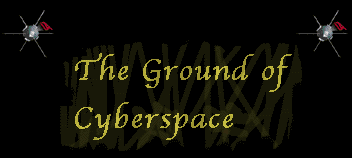


| 1. For more information about gardening on the web try The Garden Web Directory 2. The article by Hayles was entitled "Boundary Disputes: Homeostasis, Reflexivity, and the Foundations of Cybernetics" and first appeared in the Vol 2. #3 Fall 1994 issue of Configurations 3.For a synopsis of "Insects and Angels," an interview with the director, and an image from the film: Film Festival Servers-Ghent 4. Two major texts of Darwin 5."Confessions" of St. Augustine 6.Wittgenstein Links on the WWW |
For those with a love of gardening there are many sites on the Web that are worth a visit. Some of these offer helpful information about gardening in a setting that highlights products the visitor may find useful, while others offer online visits to existing gardens. One of the most impressive of these is offered by the University of Delaware Botanic Gardens. Each tree, flower, grass is carefully documented with a detailed description, a photograph, and a sound file on the proper pronunciation of the sometimes difficult Latin name of the species. The place of each plant is indicated in one of the many separate gardens of Delaware's extensive botanic garden. Information can be found on qualities such as which shrubs attract birds. One has the feeling of taking a carefully guided tour with a slightly quixotic person, whose intrepid pursuit of a specific kind of knowledge has paradoxically rendered him or her a valuable walking companion. Of course, breezes, the smell of the plants, the temperature of air and quality of light are missing, but the experience brings us close to a side of gardening that has everything to do with the artficial light of libraries and the metaphors of illumination on which the concept of a university, such as the University of Delaware, is founded. Yet, the apparent ease with which this garden, with its 19th century use of ancient languages and cataloguing systems, resides on the Web raises a larger question, whether the Web foreshadows or even is a radically new kind of influence on how ideas are wedded together, and on how we consequently think of ourselves. We must be thankful for the care that the makers of this site, Betsy Mackenzie and John Frett, have devoted to the task; it is the quality of their work that makes this site's allusion to the serenity of nature arranged in a garden so provocative. Reflecting on the eary foundations of cybernetics, the writer N. Katherine Hayles recently used the concept of the "skeuomorph." Writing in Technology and Its Discontents, edited by Robert Markley, Hayles explains that a skeuomorph is the overlaying of an ancient and familiar form onto a recent and more unsettling form in order to make the new form more palatable. The question is whether or not the popularity of these gardens on the Web stems from our pleasure of finding the familiar in an unfamiliar place--a skeuomorph--hence from our reluctance to embrace the new medium in all its unforseeable possibilities, or, on the other hand, whether their popularity stems from a common ground, an affinity at some deeper level between the space of a garden and cyberspace. Angels and Insects, a recent film directed by Philip Haas, is set in the nineteenth century and revolves around the arrival of a scientist devoted to observing the natural world into an aristocratic family, whose paternal head serves as his patron. "Nature" in the film turns out to be fascinating, horrifying, but never the calm and reassuring presence that it is assumed to be in allusions made to it by members of the aristiocratic family, whose world is slowly giving way to a new one. Through the outwardly serene eyes of the scientist, we see a side of nature that appears often irreconcilable with the self-image of the civilization immersed in exploring nature. Darwin has recently been in the news again, because one of the candidates hoping to be chosen as the Republican nominee for president, Pat Buchanan, has publicly proclaimed his rejection of Darwin's theory of evolution. What is nature or natural may always be open to question and debate, but at certain times those questions appear to be particularly charged. In a garden on the Web such as this one, there appears to be a familiar use of words that refer to pictures that refer to things in nature; this constitutes a whole view of nature, language and referentiality that goes back to Saint Augustine. This view appears to evade the twentieth century--the work of philosophers such as Wittgenstein--and to promise an untroubling continuity between past and present. Perhaps because of the pleasure our culture elicits from this evasion it will be our perception of the past that will change presently. This can be more disturbing than the prospect of change in the future, because it is much more unexpected. |